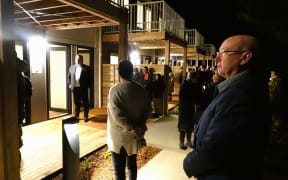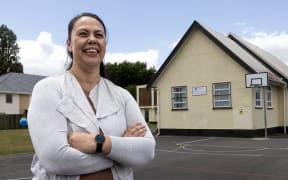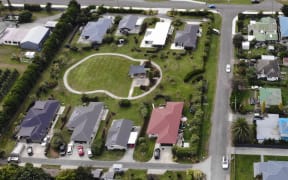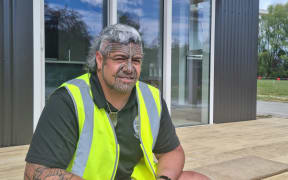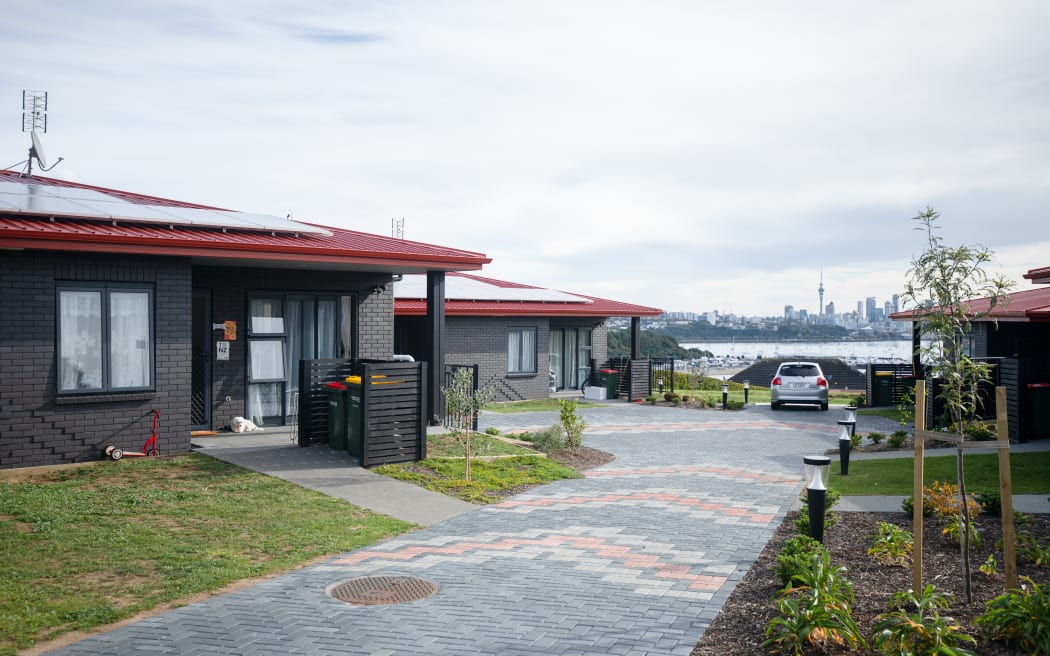
Papakāinga housing on Atareta Steet built by Ngāti Whātua Ōrākei. Photo: RNZ / Cole Eastham-Farrelly
A small sentence in the National-New Zealand First coalition agreement could speed up development of papakāinga and address overcrowding, builders say.
The line suggests removing the need for consent for dwellings less than 60m2, instead requiring only an engineer's report.
New Zealand First deputy leader Shane Jones, who is the minister of regional development, said It was intended for granny flats.
"The reason why we've promoted the 60 square metre cottage option is a practical response to the large number of Kiwis in their 60s who will require rental accommodation and who have never managed to purchase a home themselves."
But there were other benefits, including for iwi who had land and wanted to expand papakāinga - multiple homes on a single title with some communal facilities, Jones said.
"They're ready to go, and in many cases they're working with the owners of factories, who can mass produce these types of dwellings.
"And if you can free them from the RMA [ Resource Management Act] restrictions, then it's going to reduce price, and it's going to deliver, in a short period of time, a practical response to the housing dramas."
In Ngāwhā outside Kaikohe, Ngāpuhi kaumātua Ivan Hauraki, from Oraruwharo Ahu Whenua 2A Trust, has recently finished building a papakāinga for his whānau, made up of 10 transportable homes.
Consent was a major obstacle, he said.
He believed the five-year project could have been completed in half the time, without the need for consent.
"There is a bit of a jam up in that department, on getting resource consent.
"But it would work really good if we could carry on and build these papakāinga around marae, for kaumatua and kuia."
The new rule would help whānau help themselves, he said.
"We know what we're doing, we know how to do it.
"I've built a place here that any developer would be proud of."
It was not just about bricks and mortar, he said. Being able to have whānau return home to their whenua had made huge improvements to their health and wellbeing.
"Wellbeing is probably the number one advantage that we get.
"Once they got into this environment ... these people are really healthy and happy."
Solving 'hidden homelessness'
On the East Coast, Willie Te Aho is a director at Toitū Tairāwhiti Builtsmart, which builds affordable homes locally - intended for low-income whānau who have access to land.
Ditching the need for consent for small dwellings would be a great solution to overcrowding, which was a major problem, he said.
"It is a part of homelessness, and it's the hidden homelessness. We've got some families of up to 20 people in Gisborne living in a three-bedroom home."
"Where we have the opportunity to put a fully serviced, 60 square metre house on their land, that will relieve a lot of pressure."
Housing Minister Chris Bishop said he intended to introduce the change as part of a Resource Management Amendment Bill this year.

